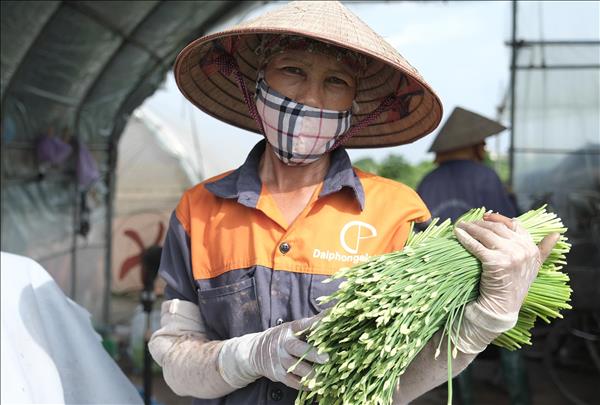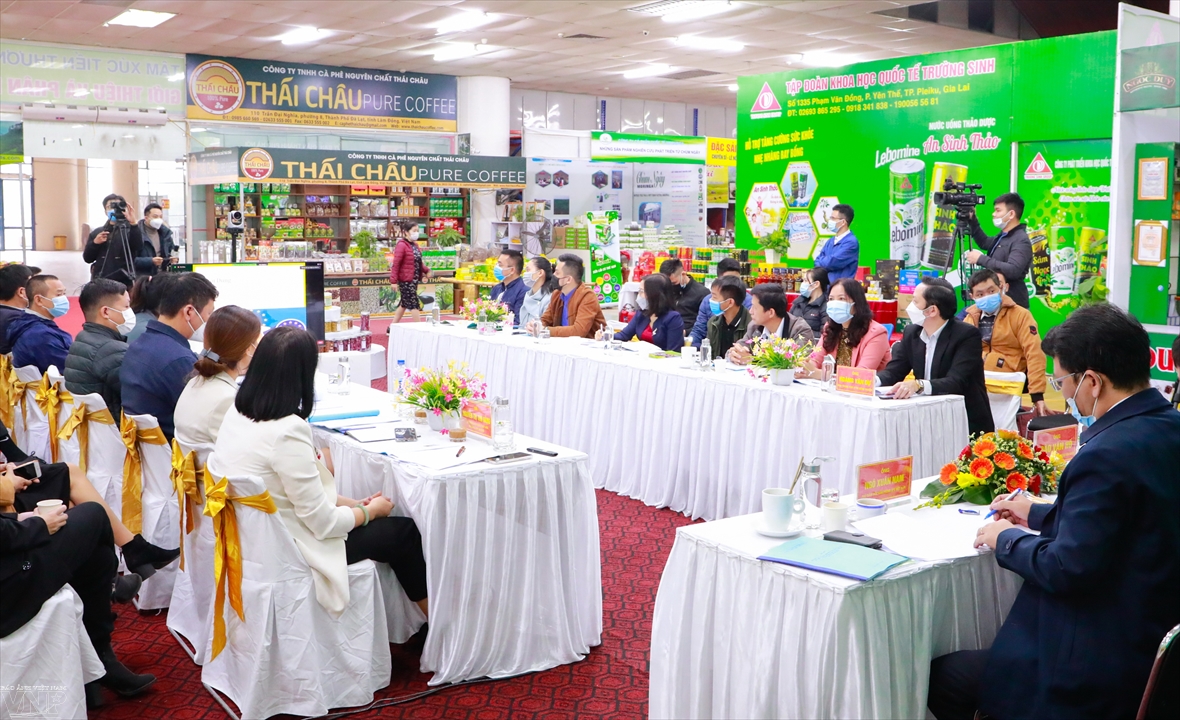Minh said the EAEU is a large and potential market with a population of over 180 million along with rich natural resources, total gross domestic product (GDP) of over 2 trillion dollars, and foreign trade turnover of around 1 trillion dollars.
The FTA is the first of its kind that the EAEU, including Russia, Belarus, Kazakhstan, Armenia and Kyrgyzstan, has sealed with the third country. It is also the first trade pact that Vietnam inked with traditional partners of the former Soviet Union.
Vietnam-EAEU FTA is a new-generation agreement, covering all economic-trade cooperation fields between Vietnam and EAEU.
The FTA is the first of its kind that the EAEU, including Russia, Belarus, Kazakhstan, Armenia and Kyrgyzstan, has sealed with the third country. It is also the first trade pact that Vietnam inked with traditional partners of the former Soviet Union.
Vietnam-EAEU FTA is a new-generation agreement, covering all economic-trade cooperation fields between Vietnam and EAEU.
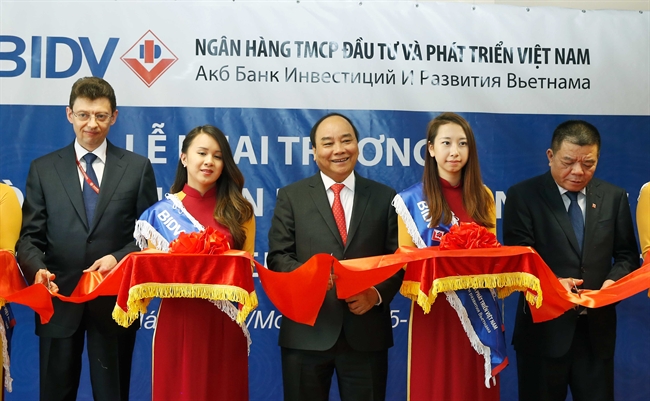
Prime Minister Nguyen Xuan Phuc attends the ceremony to inaugurate the representative office of BIDV in Russia. Photo: Thong Nhat/VNA
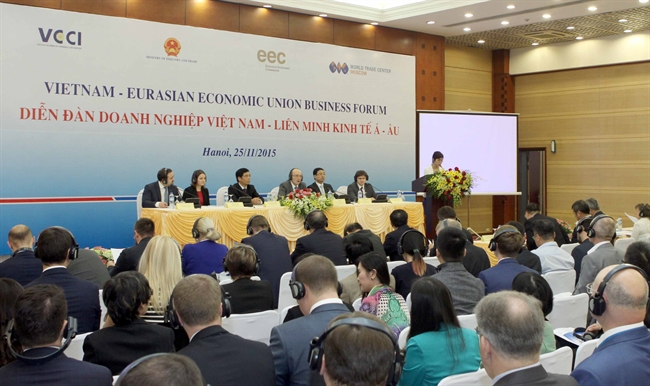
The Vietnam – Eurasian Economic Union Business Forum held in Hanoi in 2015. Photo: Tuan Anh/VNA
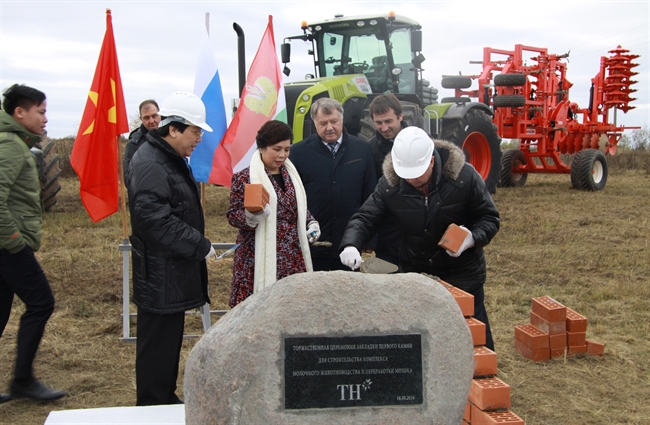
The Vietnamese dairy firm TH True Milk began the first phase
of its large-scale cow breeding and farming project in Moscow, Russia. Photo: Duong Tri/VNA
Apart from facilitating trade of goods via tariff reduction, the deal also
features commitments of the signatories to intellectual property protection, sustainable development, e-commerce, government procurement, and competition.
Under the agreement, the EAEU pledged to offer numerous incentives for Vietnamese staples such as farm goods, seafood, garment-textile, footwear and woodwork. In return, Vietnam vowed to open its market for some EAEU animal husbandry products and industrial ones like machinery, equipment, and vehicles. These goods will not compete with locally-made products but contribute to diversifying the local market.
Together with abolishing tariffs, the two sides will actively implement the program on veterinary and animal and plant quarantines (SPS); promote cooperation, carry out initiatives to facilitate trade, support techniques and establish an effective advisory mechanism.
In general, the two sides will open the market for goods which account for 90% of the tax lines, equivalent to over 90% of bilateral trade.
The deal specifies measures on increasing the transparency of state management activities in trade, strengthening cooperation between two sides in state management in customs, quality management, plant and animal quarantines and food hygiene. The FTA also has a chapter of regulations on trade, service and investment.
| The Eurasia Economic Union is a large market with a total population of over 180 million along with rich natural resources, total gross domestic product (GDP) of over 2 trillion dollars and a foreign trade volume of around 1 trillion dollars. Vietnam exports major products of telephones, spare parts, computers, electronics, garments, footwear, seafood, coffee, cashews, rice, vegetables and fruit and imports petroleum, steel, fertilizers and machines and equipment from the EAEU. |
Under the agreement, the EAEU pledged to offer numerous incentives for Vietnamese staples such as farm goods, seafood, garment-textile, footwear and woodwork. In return, Vietnam vowed to open its market for some EAEU animal husbandry products and industrial ones like machinery, equipment, and vehicles. These goods will not compete with locally-made products but contribute to diversifying the local market.
Together with abolishing tariffs, the two sides will actively implement the program on veterinary and animal and plant quarantines (SPS); promote cooperation, carry out initiatives to facilitate trade, support techniques and establish an effective advisory mechanism.
In general, the two sides will open the market for goods which account for 90% of the tax lines, equivalent to over 90% of bilateral trade.
The deal specifies measures on increasing the transparency of state management activities in trade, strengthening cooperation between two sides in state management in customs, quality management, plant and animal quarantines and food hygiene. The FTA also has a chapter of regulations on trade, service and investment.
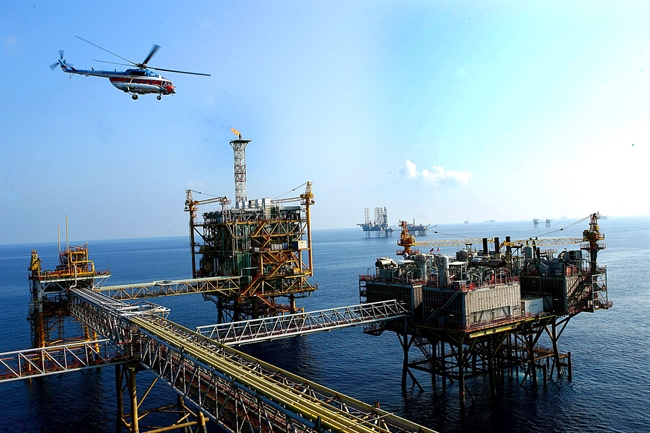
Vietsovpetro, a symbol of successful cooperation between Vietnam-Russia.
In the photo: the Central Technology Platform No 2 in Bach Ho Field, one of 40 sea projects of Vietsovpetro. Photo: Huy Hung/VNAA
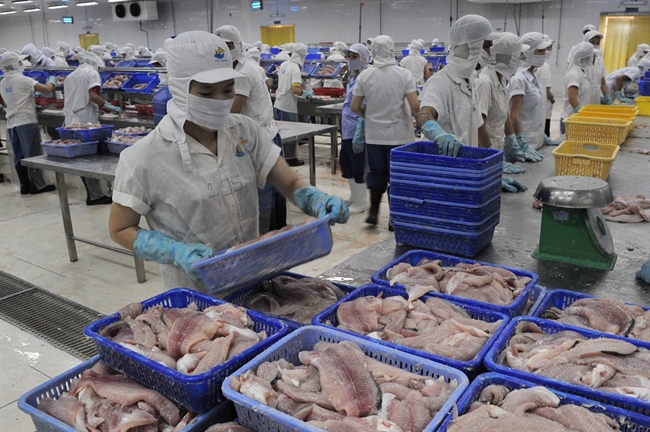
Exports of Vietnam’s aquatic sector to the EAEU are expected to increase sharply. Photo: Kim Phuong
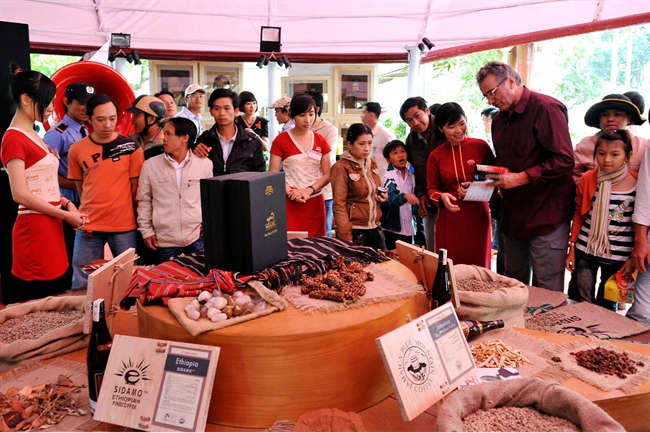
Vietnam’s farm products are exported to the EAEU. Photo: Thanh Ha/VNA
Vietnam’s garment sector will enjoy benefit from the Vietnam-EAEU Free Trade Agreement. Photo: Kim Phuong
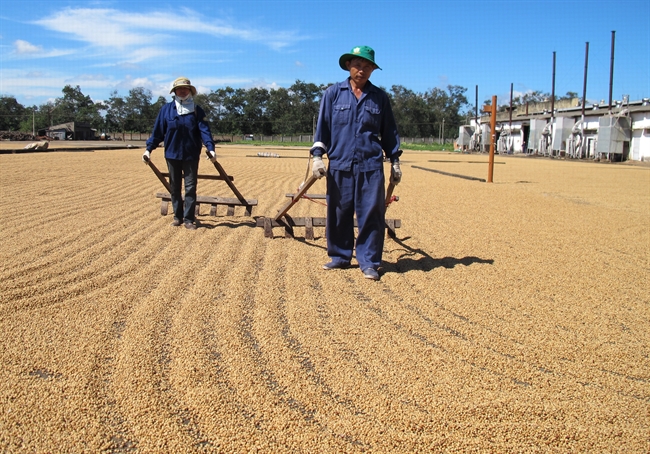
The export value of coffee, cashews, rice, fruit and vegetables was increased
when the Vietnam-EAEU Free Trade Agreement came into effect on October 5, 2016.
According to Duong Hoang Minh, Trade Counselor in Russia, the deal will bring Vietnamese enterprises many opportunities for exports as well as economic and trade cooperation. However, to benefit from the deal, Vietnamese firms should study carefully consuming habits, tastes, quality, packing and product styles of people in Russia and in the EAEU, legal requirements, technical standard systems, food hygiene and other barriers related to Russian language used popularly in this bloc. They should enhance participation in trade promotion programs, trade fairs and exhibitions; map out plans to increase competitiveness; and strengthen relations with Vietnamese banks to address payment difficulties
However, to benefit from the FTA, he noted that Vietnamese firms should study carefully regulations on the certificate of origin; enhance participation in trade promotion programs, trade fairs and exhibitions; map out plans to increase competitiveness; and strengthen relations with Vietnamese banks to address payment difficulties.
Taking about the prospect of Vietnam-EAEU FTA, Popov Aleksei, General Consul of Russia in Ho Chi Minh City said that the enforcement of the EAEU-Vietnam free trade agreement is expected to lift bilateral trade to 8-10 billion dollars in the years to come from the current 4 billion dollars. Some key products of Vietnam such as seafood and garments and textiles are expected to see a leap in development in exports. In turn, Russia’s car manufacturing sector will also have a great opportunity when setting up in Vietnam.
Prof. Nikolay Nikolayevych from the Russian Institute for Macro-Economic Research said that the EAEU has great potential because it is the largest integration organisation in the Asian and European continents. Therefore, the pact will allow Vietnam to increase sharply the goods volume, thereby increasing income from foreign trade and generating new jobs.
|
|
By VNA/VNP


